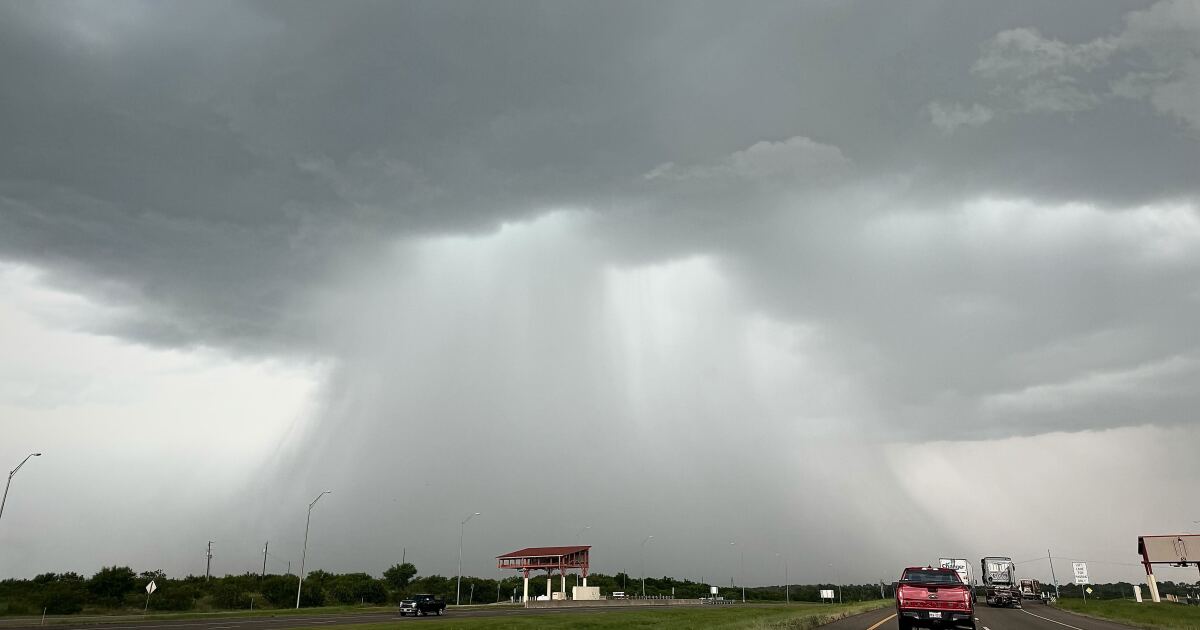article
The main switchyard at a Midlothian power plant. The federal government is sending Texas more than $60 million to strengthen the state’s power grid. Credit: Shelby Tauber for The Texas Tribune
Texas is home to approximately 400 data centers — some currently operational, others still under construction and a number that are still in the planning stages. Experts say the boom comes with a lot of uncertainty.
Texas data center power demand
What they’re saying:
“Data centers are a relatively large power demand in a small area, something like, you know, 100 or 200 megawatts of power. That’s more than a small city or a small town would be consuming itself,” said Carey King, a research scientist with the Energy Institute at the University of Texas at Austin.
Over the past year, the Electric Reliability Council of Texas has received more than 200 gigawatts worth of large load interconnection requests, approximately 73% of which are from data centers. That has led to questions about whether the state’s grid is up to the task of supplying power to the facilities.
“Many of us who suffered through winter storm Uri still have PTSD over, you know, fears that the grid won’t be able to meet demand,” said Luke Metzger, the executive director of Environment Texas, a local nonprofit working to safeguard the state’s natural environment.
Question of infrastructure
That’s not the only question. King points out that there is also a question of whether all the proposed data centers will actually be built. He says if they don’t end up materializing, it could spell trouble for anyone making investment decisions based on the projections. And if infrastructure is built to accommodate the needs of projects that never come to fruition, those costs could be passed off to consumers in the form of higher rates.
Experts say these speculative data center projects have led to uncertainty around how much power will actually be needed to meet the demands of the state’s data centers.
Senate Bill 6, which was signed into law last June, outlined new requirements for data center projects, including stipulating that data centers put up more capital up front for things like transmission studies and interconnection fees. The bill is, in part, intended to reduce some of that uncertainty around speculative power loads.
Potential environmental impact
But concerns still remain around the potential environmental impact of the state’s data centers.
“There are an estimated 130 new gas-powered power plants that have been proposed for Texas, in part to meet this demand for data centers, and if they’re all built, that’s going to have as much climate pollution as 27 million cars,” said Metzger.
Above all, Metzger says the biggest uncertainty is water, as there is no central entity in the state that collects and compiles information on those needs.
On average, a single data center consumes millions of gallons of water annually, according to researchers with the University of Michigan. Metzger says that’s of particular concern here in Texas, where water supply is already being pushed to its limits.
“Texas is a very drought-prone state, and already, you know, you know, according to the Water Development Board, you know, we don’t have enough supply to meet demand,” said Metzger. “There is no way to make more water. And so, I think ultimately, you know that that could be the greatest concern for the state.”
Over the past year, residents across Central Texas have spoken out about data centers in places like Round Rock and Taylor, citing additional concerns including falling property values, noise, and health impacts.
What’s next:
Moving forward, experts recommend that local leaders undergo long-range planning to determine whether they’re able to allocate limited resources to data centers in the long run prior to approving these projects.
The Source: Information in this article comes from FOX 7 interviews with experts.









































